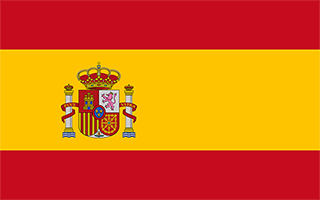Facts and Data
Webpages:
Official Unesco Page
Basis Data:
Unesco World heritage since: 1993
Size of heritage: 1.10 ha
- Buffer zone: 44 ha
Coordinates:
Longitude: -4,673°
Latitude: 39,453°
Summary
The monastery is an outstanding repository of four centuries of Spanish religious architecture. It symbolizes two significant events in world history that occurred in 1492: the Reconquest of the Iberian peninsula by the Catholic Kings and Christopher Columbus' arrival in the Americas. Its famous statue of the Virgin became a powerful symbol of the Christianization of much of the New World.
Location on Map
Show bigger map on Openstreetmap
Introduction
The Royal Monastery of Santa María de Guadalupe, located in the Province of Cáceres, in the Autonomous Community of Extremadura, Spain, is a UNESCO World Heritage site of great historical and cultural significance. This magnificent monastery, dedicated to the Virgin Mary, has a rich history dating back to the 13th century and continues to be an important religious and cultural center in Spain.
History
The origins of the Royal Monastery of Santa María de Guadalupe can be traced back to the 13th century when a shepherd discovered a hidden statue of the Virgin Mary in the nearby woods. This discovery led to the construction of a small chapel, which later evolved into the grand monastery we see today. The monastery gained royal patronage and became a significant pilgrimage site during the reign of Alfonso XI of Castile.
Over the centuries, the monastery underwent several expansions and renovations, reflecting different architectural styles such as Gothic, Mudéjar, and Renaissance. The monastery's library, established in the 15th century, became renowned for its vast collection of manuscripts and incunabula.
During the 15th and 16th centuries, the monastery played a crucial role in the exploration and evangelization of the New World. Many of the Spanish conquistadors, including Christopher Columbus, visited the monastery to seek blessings before their voyages. The monastery also became a center for the translation of indigenous languages and the preservation of indigenous cultures.
Current State
Today, the Royal Monastery of Santa María de Guadalupe continues to be an active religious institution, housing a community of Franciscan monks. The monastery is open to the public, allowing visitors to explore its architectural marvels and experience its spiritual ambiance.
The monastery complex is a harmonious blend of different architectural styles, with the Gothic cloister being one of its most remarkable features. The cloister is adorned with intricate stone carvings, depicting scenes from the Bible and the lives of saints. The Mudéjar-style church, with its stunning bell tower, is another highlight of the complex.
Inside the monastery, visitors can admire the richly decorated chapels, altarpieces, and religious artifacts. The monastery's museum houses a vast collection of religious art, including paintings, sculptures, and tapestries from various periods. The library, with its extensive collection of ancient manuscripts and books, is a treasure trove for scholars and history enthusiasts.
The Royal Monastery of Santa María de Guadalupe continues to attract pilgrims from around the world, especially during religious festivals and celebrations. The monastery's significance as a pilgrimage site was recognized by UNESCO when it was designated as a World Heritage site in 1993.
In conclusion, the Royal Monastery of Santa María de Guadalupe is a testament to Spain's rich religious and cultural heritage. Its historical significance, architectural beauty, and spiritual ambiance make it a must-visit destination for anyone interested in exploring the country's past.
